Last Updated on: February 4, 2025
Many superstitious people blot their ears or run under the bed when they hear an owl.
Do you think an owl hoot is annoying or mysterious?
If you love listening to nature and its wealth, an owl’s call won’t startle you. But it might be off-putting the first time because owls tend to have a peculiar call that’s different from the tweets and chirps of songbirds.
Why do owls hoot?
It’s a call like any other sound from a bird, meaning it has a purpose. And no, the aim isn’t to give you sleepless nights.
Why Do Owls Hoot At Night?
Owls make different sounds: screams, screeches, whistles, and growls. They aren’t the same as sounds from other avians, even though they resemble the calls of mourning doves. Here’s what various owl calls mean.
1. Defense Call
Owls might be some of the largest, fiercest birds, but they also face threats from predators like foxes, hawks, squirrels, and snakes. Therefore, an owl sounds an alarm to inform other avians about a predator or as it prepares to attack the enemy. You may hear a loud hoot or shriek until the predator disappears or until the owl starts attacking.
So, if you hear an owl hooting at night, and then it stops suddenly, it’s defending its home, or the predator has flown away. At such times, the hoot can change to an expression of anger if the owls feel threatened.
For instance, the great horned owl spreads its wings, screams, and strikes with its feet when facing an attack from its species or other predators.
2. Fear
Owls don’t sing like most avians. However, being in such a quiet environment makes it easy for them to be startled. So once they sense some movement nearby, even if it’s just you moving about looking for a good camera angle, they give a low-pitched hoot like a bark or a growl.
The call they make out of surprise is less intense than when they’re attacking because the latter’s purpose is to scare away the enemy lurking nearby.
3. Mating & Courtship
The courtship dance of avians is one of the most exciting sights in the wild, and owls don’t disappoint. The male owls hoot more because they’re courting. For instance, the male barn owl has a fancy display when mating. It calls and flies in and out of the nest.
There’s more to the courtship ritual than songs, as you’ll also see birds flying, diving, and flapping. You ought to see a courtship dance at least once.
Sometimes, a pair performs the owl mating call together. You might see such owls hooting if you’re in the breeding range.
4. To Mark A Territory
Every owl establishes its territory. It’ll always attack any species that comes into its territory, whether large avians like the great horned owls or small ones like the Northern saw-whet owls.
When a male finds a place to build a nest, it lets out loud hoots so that every other bird in the area can know that spot is out of bounds. A territorial call is one of the popular owl hoots because most owls take over nests instead of building new ones.
For that reason, they announce it for every other owl species to stay away. As soon as one owl spots another near its boundary, it’ll start to hoot.
There’s likely to be a territorial hoot in areas with overlapping raptor habitats.
How To ID Owls By Their Calls
Perhaps the most popular question about this mysterious bird is what does it mean when you hear an owl hoot at night?
Some believe an owl hooting through the night brings good fortune, while others say it spells misfortune or warns about the future. Others believe an owl hoots wisdom to guide you through a situation.
We’ll discuss a few species you’re likely to see in North America so that if any of them is already in your neighborhood, you can know the calls to listen for during the day or night. Yes, some owls hunt during the day.
1. Barred Owl
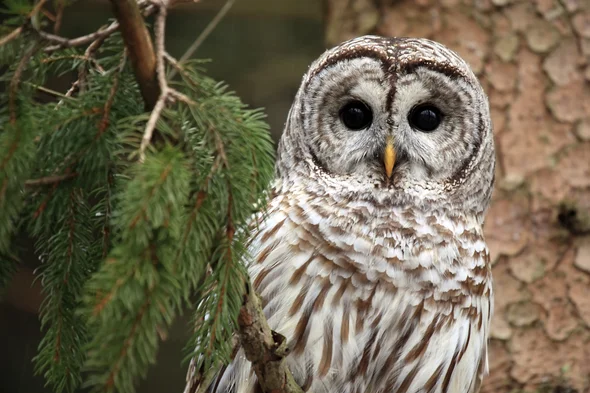
This owl’s hoot has up to 9 notes, and it’s the most popular as it sounds like the bird is asking, “who cooks for you?“ Barred owls have a mating song that consists of crackers, gurgles, hoots, and other sounds. A barred owl hoot may pierce the air in the morning.
Barred owls live in North America, so you’ll hear their hooting often.
2. Eastern-screech Owl
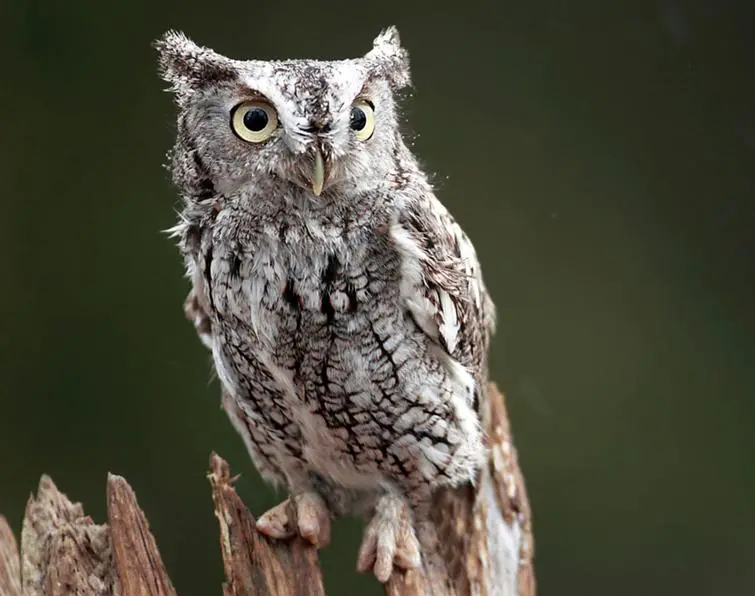
They have an even pitched trill called a tremolo that lasts up to six seconds, used by families to communicate.
The other song is a descending whinny that lasts up to two seconds — they use it to defend the territory. Eastern screech owls can sing both at once. Additionally, a mating pair may sing day and night.
3. Great Horned Owl
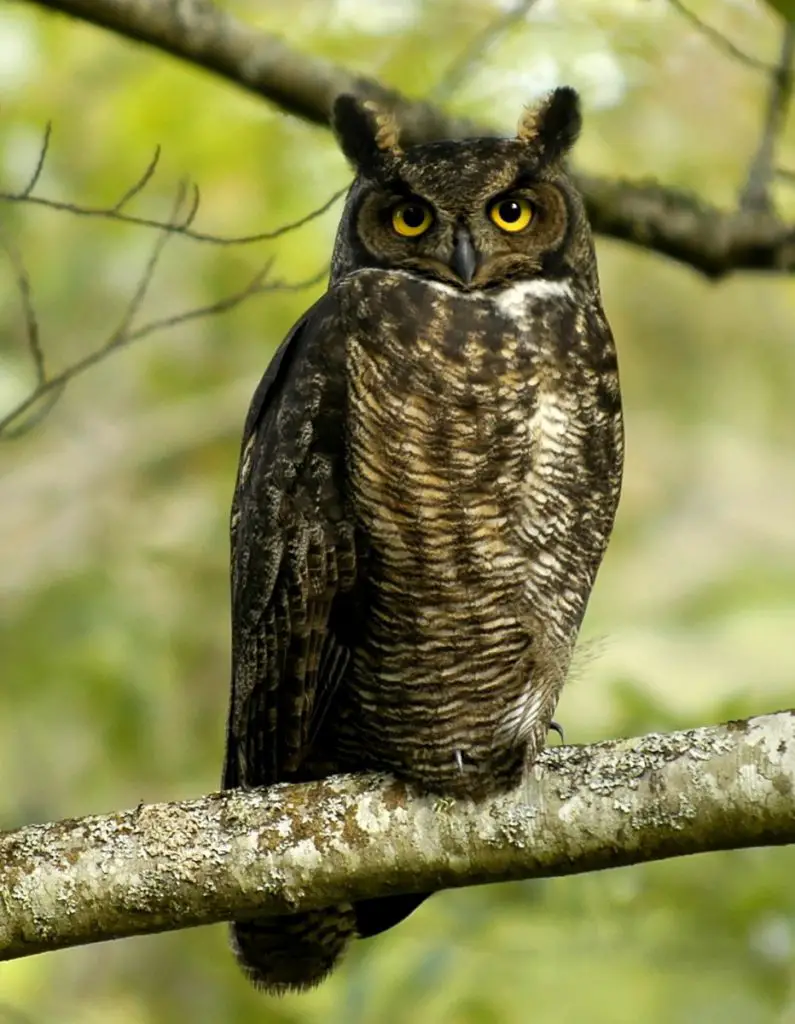
It’s a common species throughout North America. You’ll hear the male owl sing to advertise its territory in a mixture of deep and soft notes that sound like Hoo-HOO-Hoo-Hoo.
When a pair chants together, the female owl starts then the male follows at a lower pitch. These owls are more active at night. You’re more likely to hear them at dusk or early morning.
This species makes other sounds, from hisses to barks and shrieks. It claps its bill in stressful situations, such as when a human gets too close to nestlings.
4. Burrowing Owl
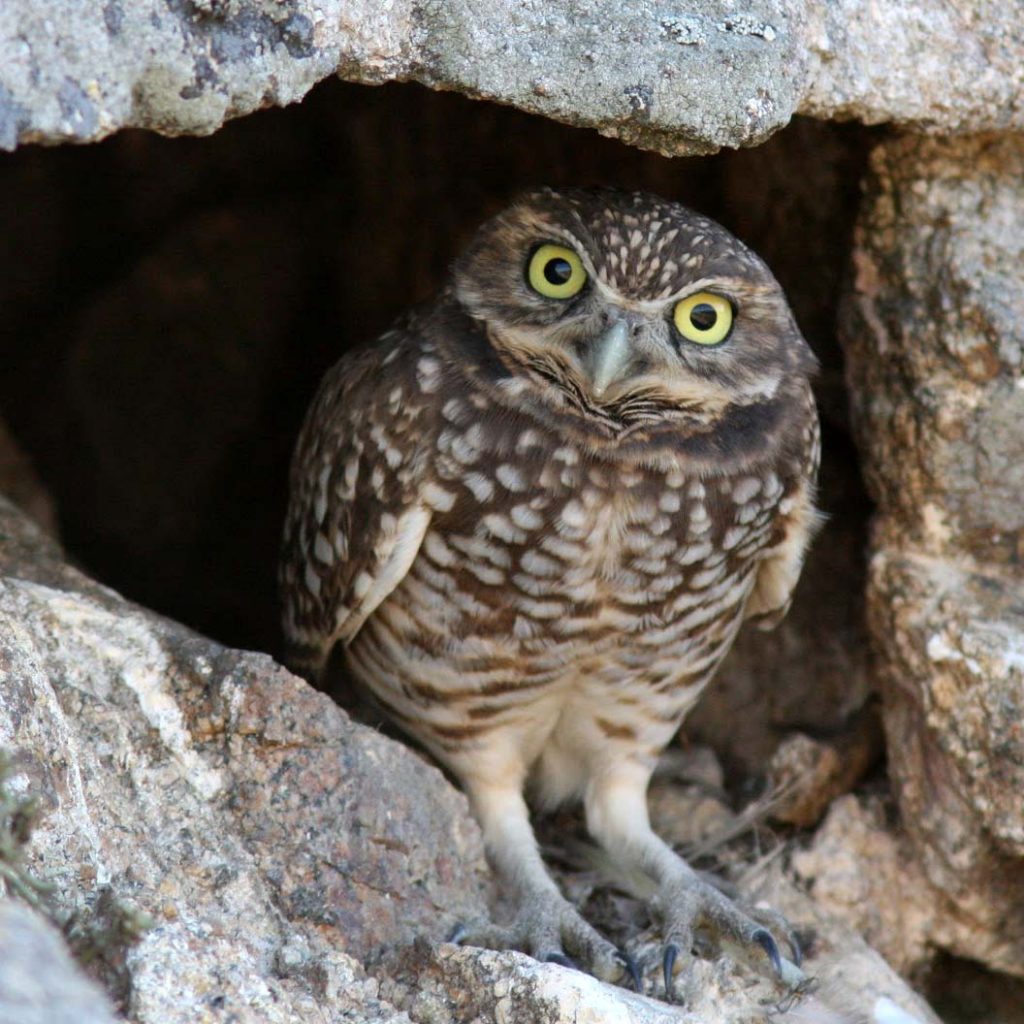
If you want to know burrowing owls are around, listen for cooing males make during the mating season. You might mistake its owl hoots for the deep call of a mourning dove. They also use this sound to defend their burrows from predators like rattlesnakes.
Younger birds have a rasping sound and their eep call.
5. Barn Owl
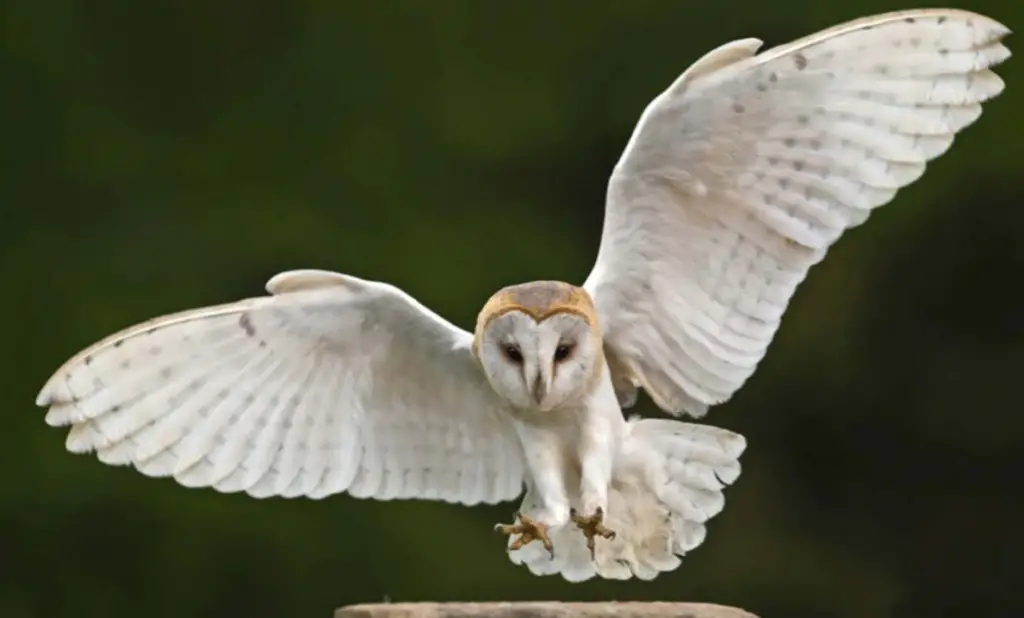
This owl makes different hoots from those of other owls because they are longer, lasting almost two seconds. It lets out a higher-pitched hoot that sounds like k-r-r-r-rick. If it’s longer, it’s a distress call.
For instance, when there’s an intruder, it makes longer hisses that last up to 4 seconds. The barn owls defend the area around their home but not the hunting ground. Therefore, you’ll see two owls hunting on the same site.
You’ll hear the males more, especially as they invite the female owls to inspect the nesting site. If you hear female owls, they’re most likely asking the males for some food.
6. Snowy Owl
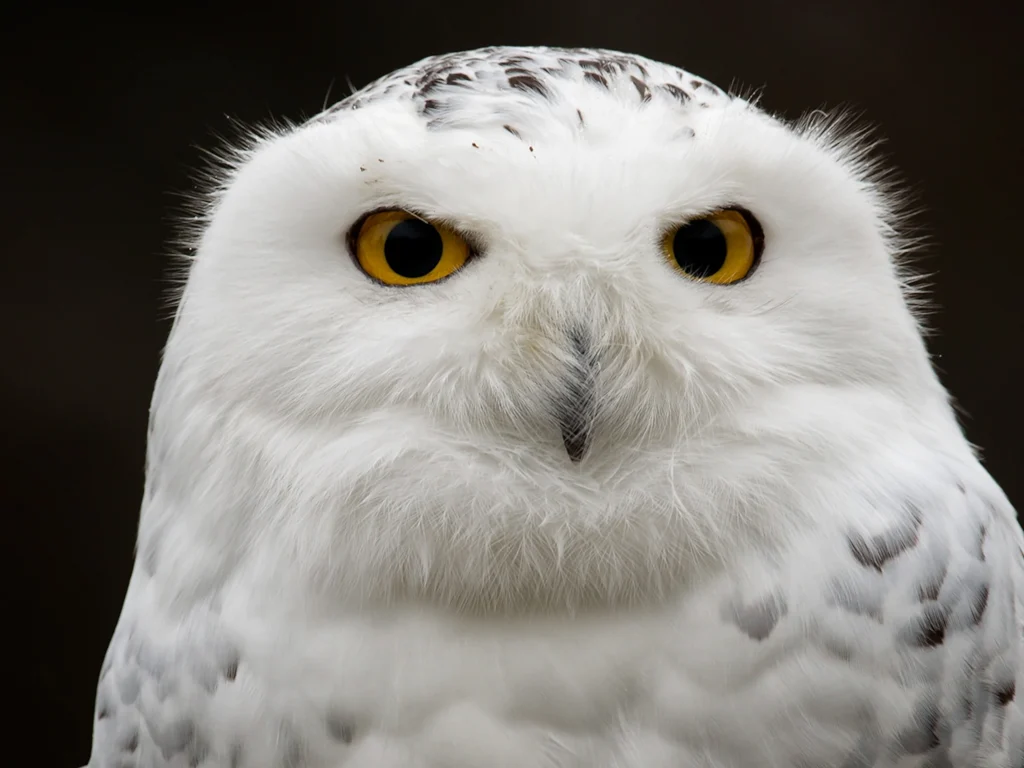
Both sexes hoot, but the male has more powerful hoots. They hoot from two to six times at once. It lets out a deep, hoarse sound that travels up to seven miles. It hoots, whistles, or hisses when defending its territory.
7. Northern Saw-Whet Owl
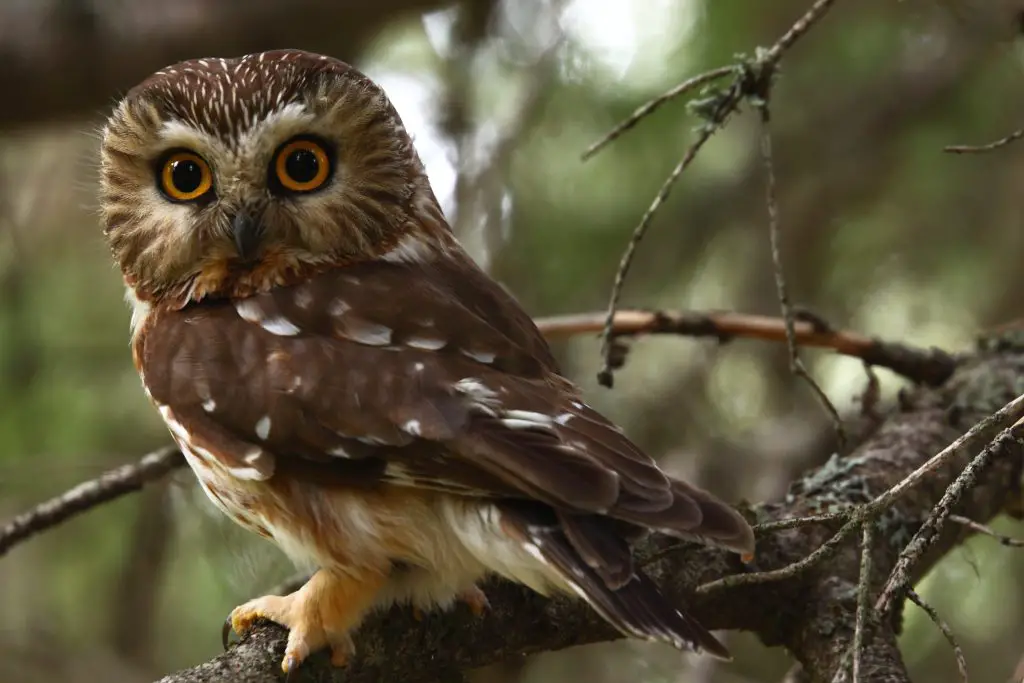
The male owls make a too-too-too for about two seconds when they arrive at new territory. Though it comes out like a whistle, it can travel for half a mile. The other male birds respond in faster, softer calls. You might also hear female owls use a too-too-too in courtship.
Roaming Tip: There’s more to an owl’s hoot than meets the eye! Know how this enigmatic bird figures in folklore and myths. Read this post to find out more — Owl Symbolism.
Watch This!
Frequently Asked Questions
Why do owls hoot at night thrice?
Nocturnal owls hoot even more than three times, and how you understand their sound depends on your beliefs and superstitions.
Some parts of India have a meaning for each owl hoot. One hoot symbolizes death, while two hoots signal future success. So, if you’re from such communities, you’ll hear owls hooting and interpret each hoot differently.
How long do owls hoot at night?
They hoot as often as they need to communicate or warn other birds about a predator. Therefore, there’s no limit.
Some owls are nocturnal animals, so they’re active during the night, and that’s why you’ll hear them calling more at night. However, it doesn’t mean that the diurnal owls don’t hoot at night, as they also need to protect their territories.
What does it mean when you hear an owl hoot at night?
If you approach this topic from a spiritual perspective, then prepare for many opinions and suggestions for why owls hoot. You’ll come across literature or myths suggesting owls bring bad omen and misfortune. Let’s look at a few diverse thoughts.
For example, Native American tribes have different interpretations, as some associate owls with supernatural activities, ghosts, or evil spirits.
The Cherokee believed there was an association between an owl and witchcraft, death, or bad luck. But, hearing an owl hooting at night was a good omen for the Greeks, so hearing one at midnight was okay. A hooting owl symbolized illness, death, or bad weather for the Romans.
Another spiritual teaching claims when an owl hoots in your face, you need energetic boundaries for protection.
In summary, if you consider all the information we gave you earlier, the different noises owls make are for the same reasons as calls and songs from other birds. So, don’t blame your bad omens today on an owl’s hooting the previous night.
Conclusion
You might hear an owl hoot before seeing its yellow or red eyes peering through tree branches in your backyard. As a birder, think of owl songs and calls as communication signals between them and other birds or predators. For instance, they shriek or bark when feeling threatened. At other times, they growl in defense against predators.
Each vocalization has a purpose. In conclusion, hearing an owl hoot in your backyard is scary, but you’ll have a birding experience you’ll never forget when you know the meaning of those sounds.

